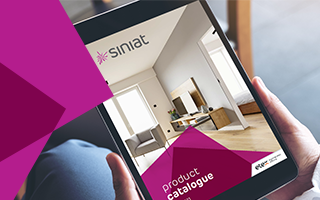Reverberation Time
In an enclosed space, sound gets reflected many times from hard and smooth surfaces to create reverberation. In other words, the sound persists long after its source ceased generating it. Sounds reflected from multiple surfaces also add up to increase the noise (decibel) level in the room.
In an enclosed space, for a sound of a given frequency or frequency band, the time that will be required for the reverberantly decaying sound pressure level in the space to decrease by 60 decibels is called reverberation time, represented by RT (or RT60) in seconds.
Spaces without sound absorbing materials such as large, unfurnished and empty rooms have long reverberation times. Spaces with lots of sound absorbers such as cinemas have short reverberation times.
Reverberation vs echo
Echo and reverberation are completely different acoustic phenomena. When a sound is reflected back from a distant object and hits our ears after an interval of 0.1s, our brain perceives it as a different sound, called an echo.
For example: if a large, vertical and smooth wall (such as a cliff face) is more than 16m away and you shout, it takes more than 0.1s for the sound to reach the wall and bounce back to you (distance travelled > 32m, speed of sound in air: 320m/s, so time required > 0.1s), so you hear an echo. But if the wall is closer than 16m, the reflected sound reaches your ear in less than 0.1s, and your brain perceives it as a continuation of the original sound. This is reverberation.
It is very important when designing an enclosed space to ensure that no echo occurs. Reverberation occurs in any enclosed space, but the reverberation time can be short or long depending upon various factors such as:
-
Volume of the room;
-
Shape of the room;
-
Sound absorption properties of the building elements;
-
Furnishings / Objects in the room;
-
Occupancy of the room.
How much reverberation is good?
The answer is very application specific. A long reverberation time makes a space acoustically “live” and may suit spaces for music, while shorter reverberation times enhance the speech intelligibility in a room and are better suited to spaces for speech. A very low reverberation time, e.g. talking in an anechoic chamber, can be very uncomfortable.
The Australia/ New Zealand standard AS/NZS 2107:2016 Acoustics—Recommended design sound levels and reverberation times for building interiors provides the recommended design sound levels and reverberation times for building interiors.
Can I determine the reverberation time before building?
The answer is yes, you can. However, it depends on how accurate you want it to be. One of the most reliable ways of knowing the reverberation time of your space before building is by using complex three dimensional architectural and acoustical modelling and measuring technologies. For acoustically critical venues, a physical model of the building and its interiors may be required.
But, for many regular shaped and normal sized rooms, a simple Sabine equation can provide a quick estimation of the reverberation time. According to the European Standard EN 12354-6:2003 Building Acoustics - Estimation of acoustic performance of buildings from the performance of elements - Part 6: Sound absorption in enclosed spaces, the Sabine formula can be used to estimate the reverberation time of an enclosed space with:
-
Regular shaped volume: no dimension being more than 5 times of any other dimension;
-
Evenly distributed absorption: absorption coefficients not varying by more than a factor of 3 between pairs of opposite surfaces, unless good sound diffusion objects are present;
-
Not too many objects: total volume of objects being less than or equal to 20% of room volume.
Simply put, the Sabine Formula is T=0.049(V/A) where T = reverberation time or time required (for sound to decay 60 dB after source has stopped) in seconds. V = Volume of room in cubic feet. A = Total area of absorption in sabins.
Siniat offers an online reverberation time calculator where you can specify your reverberation time requirements, provide your room dimensions, existing building materials, furnishing level and occupancy of your space and find out the current estimated reverberation time. If the current reverberation time does not meet the requirement, you can add additional sound absorbers and calculate the new reverberation time instantly, until the requirements are met.
Reverberation time vs frequency of sound
Like any acoustic measurement, reverberation time is also frequency dependent. The simple reason is that each material absorbs sound of different frequencies in different efficiencies. For smaller spaces, AS/NZS 2107-2000 recommends making reverberation time independent of frequency, which means it is better to have uniform reverberation time throughout the frequency range.
However, it is generally considered acceptable in large volumes to have some increase in reverberation towards the low frequencies. Calculating room acoustics based on a single number sound absorption rating like NRC can sometimes be misleading.







